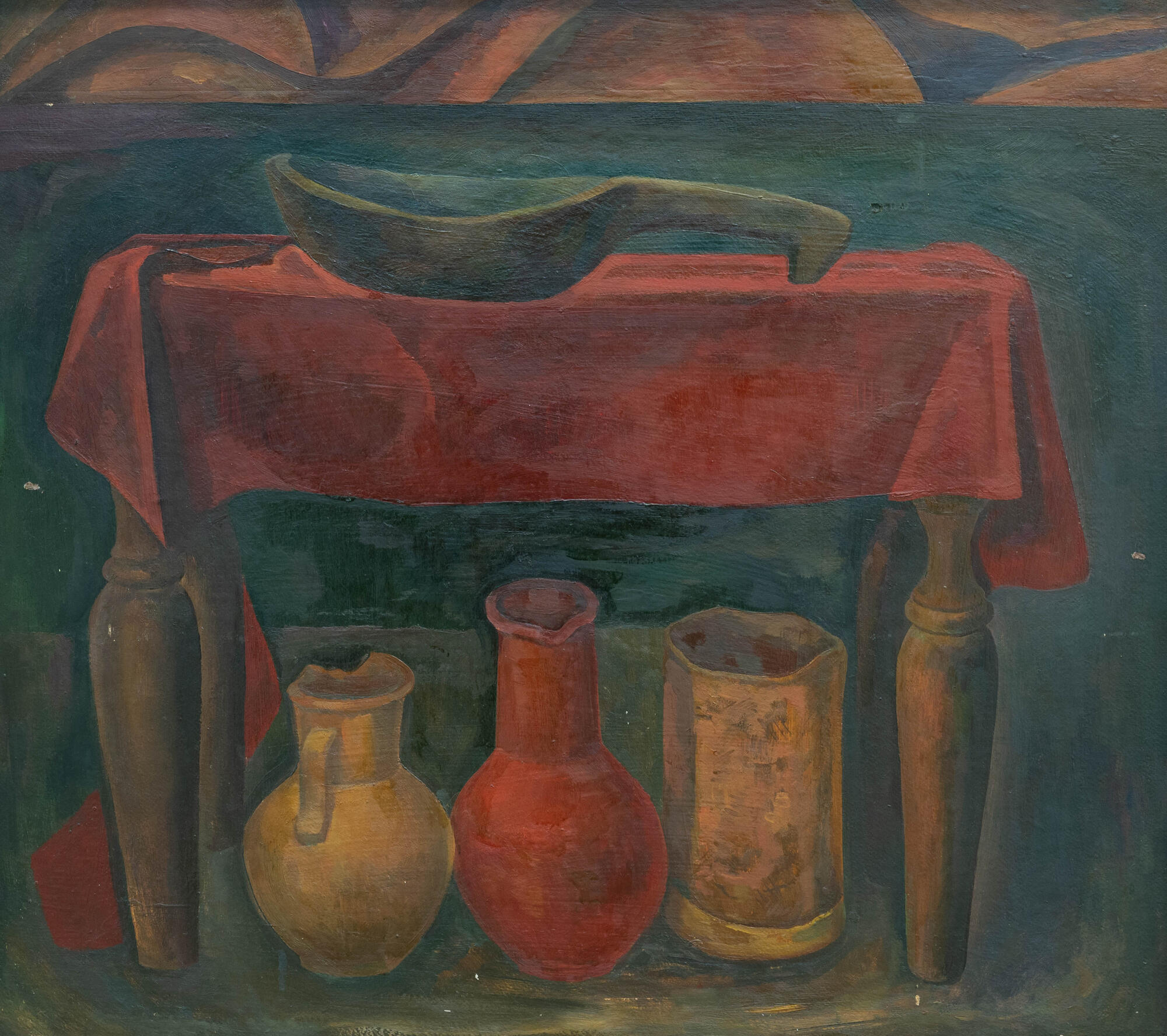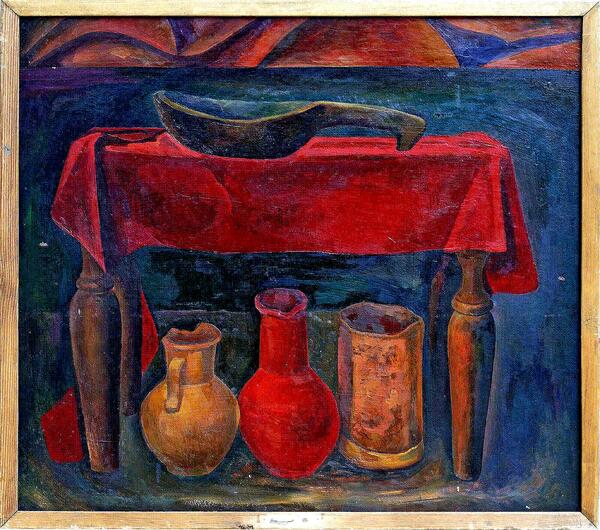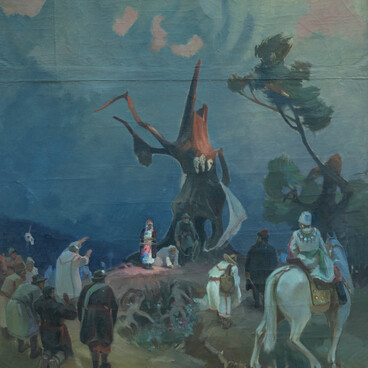Nikolay Yegorovich Yegorov was born in 1940 in the village of Nizhniye Kunashi in the Chuvash Republic.
He belongs to the generation of artists of the “austere style”, which is consistent with the themes he chooses, the pictorial system of his works, and many facts in his biography. After graduating from the Cheboksary Art College in 1962 and the Surikov Moscow Art Institute in 1968, he went on a creative trip to the north in search of “true” people and rough living conditions. Unassuming, restrained, and honest faces, severe northern nature, and the cold sea sank deep into the artist’s heart, so in 1977, almost 10 years later, he joined the Murmansk-Dudinka polar expedition on board the Arktika nuclear-powered icebreaker.
That same year, Yegorov painted several still lifes on national themes with similar coloring (dark, restrained, with a predominance of earthy, reddish, and ocher hues) and a set of everyday objects: a table covered with a crimson tablecloth, a wooden kovsh called “altar” (a type of ladle), and other details of simple village life. In the “Still Life with a Kovsh”, the artist follows the beaten path, expressing the national identity with the help of characteristic objects (bast shoes, Chuvash embroidery), while in the painting “Land of Our Ancestors”, he forgoes this straightforwardness and chooses to generalize the image as much as possible and add symbolic meaning to the objects.
A table is the most important place, wherever it is: in an izba, a yard, or a cemetery. This is a sacred place, and it is up to the owner who to invite to sit there. Only close relatives gather around one table. Many ceremonies include walking around the table. This tradition tells about the boundary between the world of the living and the world of the dead.
The artist’s works include “Guard”, “Sasha Batalov — the Russian Soldier”, “Father and Son”, “Builders of the Traktorny”, “People of the Track”.
In 1997, he left secular art and began working in the restoration and painting workshop of the Cheboksary Holy Trinity Monastery. Nikolay Yegorov restored the icons “Annunciation” and “The Savior (Shoulder-Length)”.
He belongs to the generation of artists of the “austere style”, which is consistent with the themes he chooses, the pictorial system of his works, and many facts in his biography. After graduating from the Cheboksary Art College in 1962 and the Surikov Moscow Art Institute in 1968, he went on a creative trip to the north in search of “true” people and rough living conditions. Unassuming, restrained, and honest faces, severe northern nature, and the cold sea sank deep into the artist’s heart, so in 1977, almost 10 years later, he joined the Murmansk-Dudinka polar expedition on board the Arktika nuclear-powered icebreaker.
That same year, Yegorov painted several still lifes on national themes with similar coloring (dark, restrained, with a predominance of earthy, reddish, and ocher hues) and a set of everyday objects: a table covered with a crimson tablecloth, a wooden kovsh called “altar” (a type of ladle), and other details of simple village life. In the “Still Life with a Kovsh”, the artist follows the beaten path, expressing the national identity with the help of characteristic objects (bast shoes, Chuvash embroidery), while in the painting “Land of Our Ancestors”, he forgoes this straightforwardness and chooses to generalize the image as much as possible and add symbolic meaning to the objects.
A table is the most important place, wherever it is: in an izba, a yard, or a cemetery. This is a sacred place, and it is up to the owner who to invite to sit there. Only close relatives gather around one table. Many ceremonies include walking around the table. This tradition tells about the boundary between the world of the living and the world of the dead.
The artist’s works include “Guard”, “Sasha Batalov — the Russian Soldier”, “Father and Son”, “Builders of the Traktorny”, “People of the Track”.
In 1997, he left secular art and began working in the restoration and painting workshop of the Cheboksary Holy Trinity Monastery. Nikolay Yegorov restored the icons “Annunciation” and “The Savior (Shoulder-Length)”.



